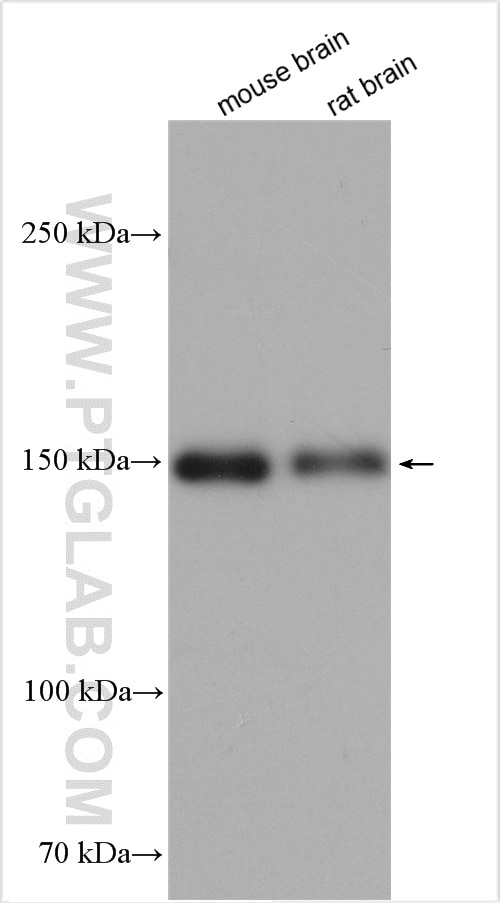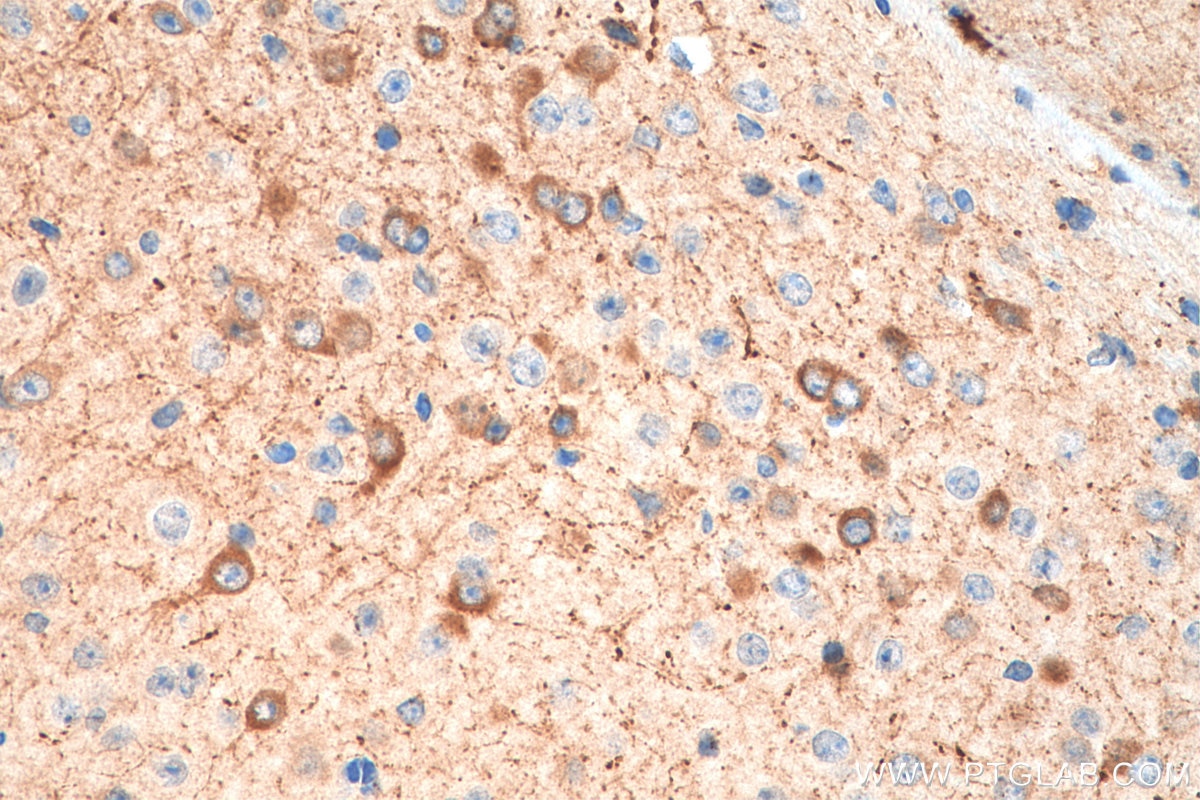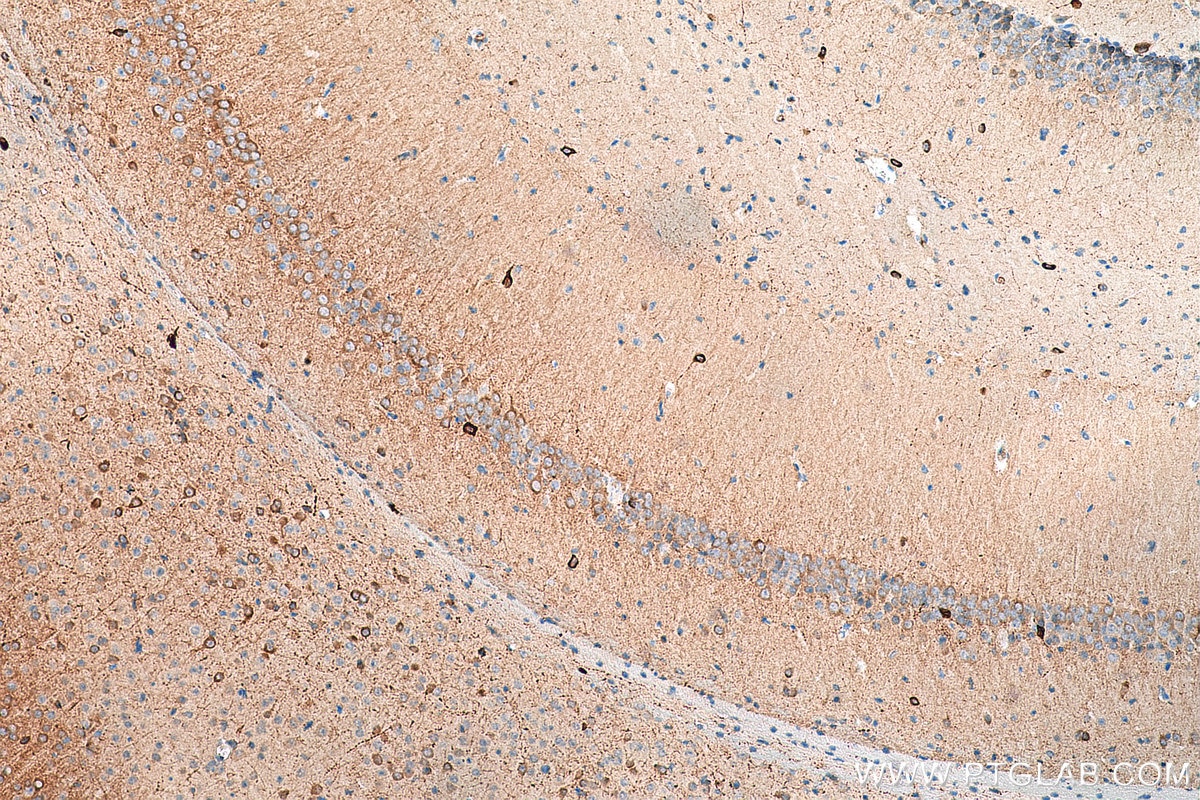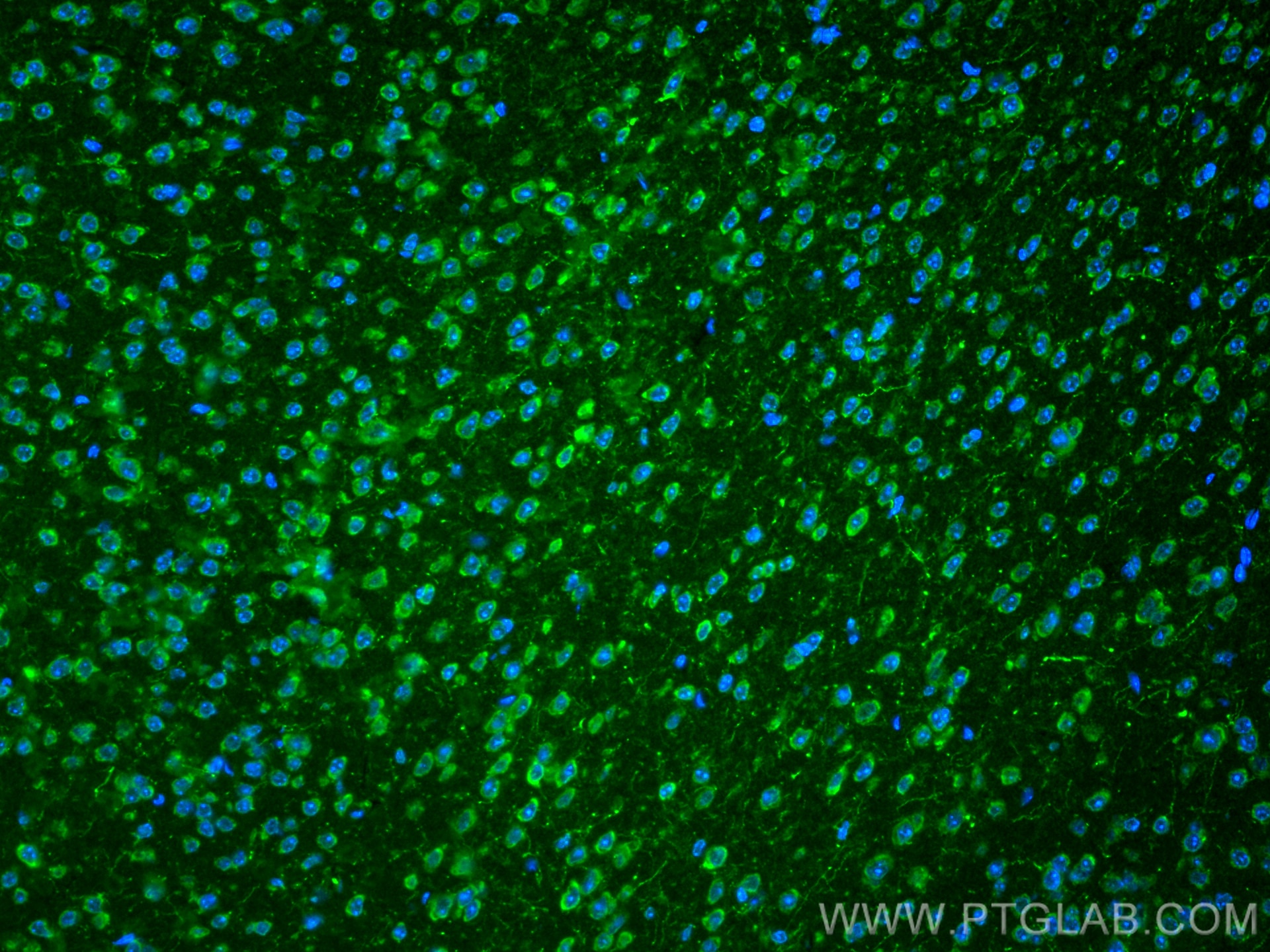nNOS Polyklonaler Antikörper
nNOS Polyklonal Antikörper für WB, IHC, IF-P, IF-Fro, FC (Intra), ELISA
Wirt / Isotyp
Kaninchen / IgG
Getestete Reaktivität
human, Maus, Ratte
Anwendung
WB, IHC, IF-P, IF-Fro, FC (Intra), ELISA
Konjugation
Unkonjugiert
Kat-Nr. : 29231-1-AP
Synonyme
Geprüfte Anwendungen
| Erfolgreiche Detektion in WB | Maushirngewebe, Rattenhirngewebe |
| Erfolgreiche Detektion in IHC | Maushirngewebe Hinweis: Antigendemaskierung mit TE-Puffer pH 9,0 empfohlen. (*) Wahlweise kann die Antigendemaskierung auch mit Citratpuffer pH 6,0 erfolgen. |
| Erfolgreiche Detektion in IF-P | Maushirngewebe |
| Erfolgreiche Detektion in IF-Fro | Rattenhirngewebe |
| Erfolgreiche Detektion in FC (Intra) | HeLa-Zellen |
Empfohlene Verdünnung
| Anwendung | Verdünnung |
|---|---|
| Western Blot (WB) | WB : 1:1000-1:4000 |
| Immunhistochemie (IHC) | IHC : 1:250-1:1000 |
| Immunfluoreszenz (IF)-P | IF-P : 1:50-1:500 |
| Immunfluoreszenz (IF)-FRO | IF-FRO : 1:50-1:500 |
| Durchflusszytometrie (FC) (INTRA) | FC (INTRA) : 0.40 ug per 10^6 cells in a 100 µl suspension |
| It is recommended that this reagent should be titrated in each testing system to obtain optimal results. | |
| Sample-dependent, check data in validation data gallery | |
Veröffentlichte Anwendungen
| WB | See 4 publications below |
| IF | See 2 publications below |
Produktinformation
29231-1-AP bindet in WB, IHC, IF-P, IF-Fro, FC (Intra), ELISA nNOS und zeigt Reaktivität mit human, Maus, Ratten
| Getestete Reaktivität | human, Maus, Ratte |
| In Publikationen genannte Reaktivität | human, Ratte |
| Wirt / Isotyp | Kaninchen / IgG |
| Klonalität | Polyklonal |
| Typ | Antikörper |
| Immunogen | nNOS fusion protein Ag28910 |
| Vollständiger Name | nitric oxide synthase 1 (neuronal) |
| Berechnetes Molekulargewicht | 161 kDa |
| Beobachtetes Molekulargewicht | 160 kDa |
| GenBank-Zugangsnummer | NM_000620 |
| Gene symbol | nNOS |
| Gene ID (NCBI) | 4842 |
| Konjugation | Unkonjugiert |
| Form | Liquid |
| Reinigungsmethode | Antigen-Affinitätsreinigung |
| Lagerungspuffer | PBS with 0.02% sodium azide and 50% glycerol |
| Lagerungsbedingungen | Bei -20°C lagern. Nach dem Versand ein Jahr lang stabil Aliquotieren ist bei -20oC Lagerung nicht notwendig. 20ul Größen enthalten 0,1% BSA. |
Hintergrundinformationen
nNOS belongs to the NOS family. nNOS produces nitric oxide (NO) which is a messenger molecule with diverse functions throughout the body. In the brain and peripheral nervous system, NO displays many properties of a neurotransmitter. NO is a reactive free radical which acts as a biologic mediator in several processes, including neurotransmission and antimicrobial and antitumoral activities. NO is synthesized from L-arginine by nitric oxide synthases. nNOS is a nitric oxide synthase which is highly expressed in skeletal muscle. Genetic variations in nNOS gene are associated with susceptibility to infantile hypertrophic pyloric stenosis type 1 (IHPS1).The antibody can recognize isoform 1,2,4 of nNOS.
Protokolle
| PRODUKTSPEZIFISCHE PROTOKOLLE | |
|---|---|
| WB protocol for nNOS antibody 29231-1-AP | Protokoll herunterladen |
| IHC protocol for nNOS antibody 29231-1-AP | Protokoll herunterladenl |
| IF protocol for nNOS antibody 29231-1-AP | Protokoll herunterladen |
| FC protocol for nNOS antibody 29231-1-AP | Download protocol |
| STANDARD-PROTOKOLLE | |
|---|---|
| Klicken Sie hier, um unsere Standardprotokolle anzuzeigen |
Publikationen
| Species | Application | Title |
|---|---|---|
Neurosci Lett Effects of ligustrazine on energy metabolism in migraine rats based on mitochondria-inflammation pathway | ||
J Cell Mol Med S-Nitrosylation of NOTCH1 Regulates Mesenchymal Stem Cells Differentiation Into Hepatocyte-Like Cells by Inhibiting Notch Signalling Pathway | ||
Fluids Barriers CNS Rh-relaxin-2 attenuates oxidative stress and neuronal apoptosis via ERK-nNOS-NO pathway after germinal matrix hemorrhage in rats | ||
Life Sci An animal model induced by bilateral cavernous nerve crushing mimics post-radical prostatectomy erectile dysfunction in old rats | ||
J Nanobiotechnology Biodegradable nano black phosphorus based SDF1-α delivery system ameliorates Erectile Dysfunction in a cavernous nerve injury rat model by recruiting endogenous stem/progenitor cells | ||
Pain Res Manag Exploring the Analgesic Initiation Mechanism of Tuina in the Dorsal Root Ganglion of Minor CCI Rats via the TRPV1/TRPA1-cGMP Pathway |







